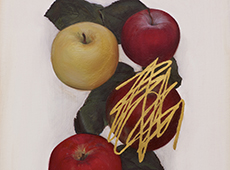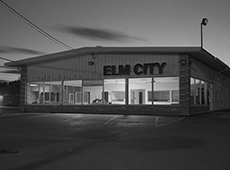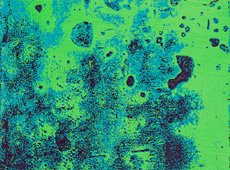Aspiring to express subtler layers of reality in his art, he gradually liberated himself from the limitations of an overt political agenda.
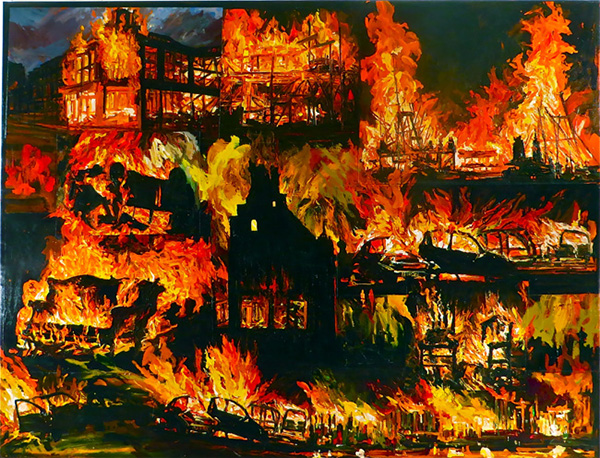
Arnold Mesches, “Shock and Awe 23,” 2012. A/c, 80 x 104 in. © Arnold Mesches. Courtesy of the artist.
The shock of his first encounter with Franz Kline’s paintings back in the fifties was clearly still fresh in Arnold Mesches’ memory over sixty years later. In a recent artist talk at Life on Mars Gallery, where he had his first NYC exhibition in a decade, the ninety year old painter recalled how Kline’s bold abstractions had affected him like a hit on the head. It is no wonder that visceral experience was so vivid in the artist’s mind. Starting his way as an ardent Social Realist painter in the thirties, Mesches grew disillusioned with the Social Realists’ dogma of subject matter over form. By the time he came across abstract expressionism, he was ready for this formative encounter.
Aspiring to express subtler layers of reality in his art, [Mesches] gradually liberated himself from the limitations of an overt political agenda.
Although, throughout the years, Mesches remained a leftist activist, he also realized that art had more to it than expressing a political ideology. Mesches’ life story, including his political involvement, vocal social activism, resulting FBI files, and his inspiring personality, all provided fertile ground for the press, several novels and a film (Heroic Measures, written by Mesches’ wife Jill Ciment, is a celebrated novel based on the couple’s 44 years together; and a feature film, adapted from Ciment’s novel and starring Morgan Freeman and Diane Keaton, is coming soon). Reflecting on the time period from the Mccarthy era to the early seventies, Mesches asserted with a slightly dismissive hand gesture that “even ‘peace’ was a Communist word back then. If you signed a petition for rent control, you could get an FBI file.”
Aspiring to express subtler layers of reality in his art, he gradually liberated himself from the limitations of an overt political agenda. Social Realism evidently became too narrow for him. “I was questioning, and wanted viewers not only to question what they are seeing, but why they are questioning their awakened uneasiness,” he said in an earlier phone interview. This evocative sense of the absurd is still pulsating at the core of his work. Merging abstraction and figuration into a cohesive form, Mesches’ paintings in this show convey open-ended narratives of an absurd and complex world. Working in thematic series and drawing upon images from magazines and the internet, Mesches depicts uncanny juxtapositions. As he put it, “I am interested in the disparity that makes up the absurd.”
spacer.
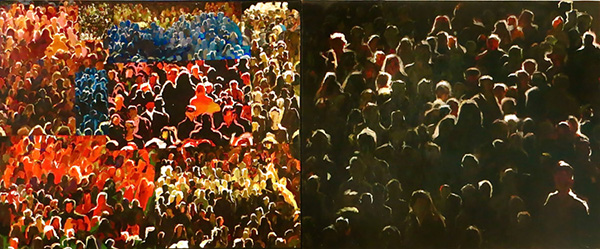
Arnold Mesches, “Eternal Return 11,” 50 x 120 in. Acrylic panels on canvas mounted on canvas, 2013-14. Courtesy of the artist.
In his recent series, “Eternal Return,” Mesches conveys this sense of complex absurdity with fresh subtlety. The diptych “Eternal Return 11” coalesces fragments of crowd imagery into a panoramic view. Outlined with luminous paint over dark shadows, with occasional bright red oval shapes for blank lit faces, the suggestive figures on the right canvas form an abstracted portrait of a generic crowd in the dark. Evoking spectators in a movie theater, this crowd seems passive but also charged with anticipation for a narrative. Resonating an organic entity with multiple heads or a pattern of vegetative growths in a nocturnal landscape, the individual forms unify into one, like a force of nature. On the left panel, the image explodes into a symphony of colors. Patches of blue on the top right, with flaming reds on the bottom left and bright yellows on the bottom right, surround a couple of dark silhouetted figures, which immediately link to the dark forms on the right canvas. Born out of necessity—the size limitation of his Brooklyn space—the collage-form Mesches has developed over the years (he assembles his large canvases from smaller sections) adds a rich physical and metaphoric layer to both form and narrative.
Mesches’ acrylic textures look just like oils. He gave away his process readily. “There is no secret in art,” he said in his talk, addressing a question related to his acrylic technique. The artist said that he had been working with the chemistry of the paint, dividing it into translucent and opaque categories, without using a retarder, media or even water. Finally, in response to a question regarding his stamina as a painter, Mesches said decisively that he vowed to himself a long time ago to keep getting better, or quit. As is evident from the vitality of his latest series, the search goes on.
Etty Yaniv was born in Tel Aviv, Israel, and currently works on her installation art and blog writing in Brooklyn.
Editor’s Recs:
[portfolio_slideshow id=4207]
Subscribe to Tilted Arc
If you like this story, please consider subscribing. We are sticklers for privacy.
We will never sell or share your e-mail address.

